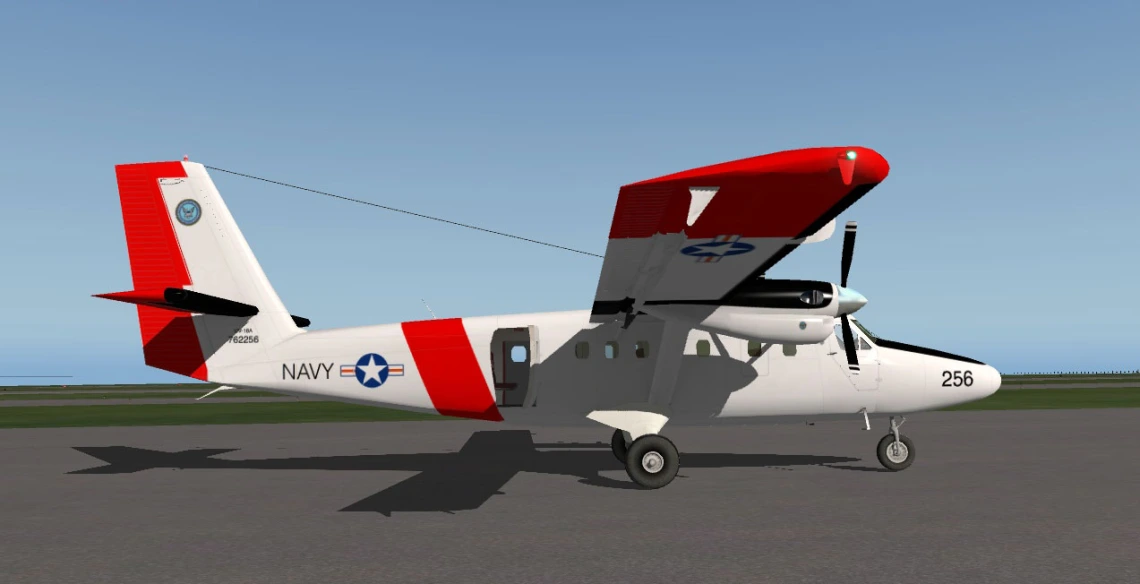Engineering, Optics Colleges Land National Support for Special Equipment
Department of Defense funds high-tech measuring equipment to support research.

Field work for the cloud residual sampling project, one of five DOD-supported research projects at the University of Arizona, will begin as early as July 1 from this Navy UV-18 Twin Otter in Monterey, Calif. (Photo: unols.org)
The U.S. Department of Defense (DOD) has awarded five grants to University of Arizona researchers for high tech measuring equipment that can be used in real-world applications. Two of the awards went to faculty members of the College of Engineering and three went to the UA College of Optical Sciences. Nationally, the UA captured five of the 165 grants awarded.
The College of Engineering awardees are Armin Sorooshian of the Department of Chemical and Environmental Engineering and Jennifer Duan of the Department of Civil Engineering and Engineering Mechanics, both proposing unique measurement methodologies.
Sorooshian's project examines water droplets in clouds for residual particles to determine their effect on precipitation and visibility. The project will develop and deploy in the field a tube-like aircraft inlet that can sample cloud droplets and dry them down, leaving only the residual particles that were the original seeds of the drops.
Examining the physical and chemical characterization of these particles enhances knowledge of how atmospheric aerosol particles affect clouds, precipitation, and visibility, Sorooshian said. The research team will use a U.S. Navy aircraft based near Monterey, Calif., to test this new tubular inlet device. The device is also expected to enhance the value of other instrumentation on the same aircraft downstream of this inlet, as the various characteristics of the cloud particles become better known.
The project -- which goes into the field for testing beginning July 1 -- is projected to not only improve the knowledge base related to the physicochemical nature of cloud droplets, but will educate engineering students involved in the study in the areas of instrument design and characterization, field measurements and analyzing scientific data, Sorooshian says.
Duan's civil engineering project earned support from the DOD's Army Corps of Engineers for its unique ability to study dam break flow, river meandering migration, flooding, and groundwater recharge, all in a controlled laboratory setting.
The DOD award supports the construction of a 15-by-60-foot experimental flume that simulates dam break flow events. Data measurements during these experiments will then be used to verify current models used for dam breaks or levee breaches in large rivers.
The large flume will also be used to study irrigation-induced erosion in furrows such as those used with crops on farmland. The study of these characteristics is also supported by the USDA Arid Land Agricultural Research Lab in Maricopa, Ariz., which is a University of Arizona extension.
"The flume provides an important experimental facility for verifying numerical models. This allows my modeling research to build on a solid physical basis," said Duan. "Although many extreme events cannot be measured in nature, we can replicate those natural processes (e.g. flooding, dam break) using this facility to enhance our computational modeling capabilities."
Nationally, the DOD awarded $37.8 million to academic institutions to support the purchase of research instrumentation under the Defense University Research Instrumentation Program, or DURIP. A total of 165 awards went to 83 academic institutions, ranging from $50,000 to $990,000 each, averaging approximately $230,000. In 2009, 222 awards totaling $52.5 million were made. The requests to the DOD for the two UA College of Engineering projects totaled approximately $150,000.
Other projects from the University of Arizona receiving DURIP 2011 awards include: "Explore a packaged, updateable, three-dimensional display system using photorefractive polymer devices for near real-time telepresence," from Nasser Peyghambarian; "Mathematical modeling and experimental validation of ultrafast nonlinear light-matter coupling," from Pavel Polynkin; and "Active Mueller matrix polarimetry and coherence-based sensing of the visible and nearinfrared spectrum," from J. Scott Tyo, all of the UA College of Optical Sciences.

